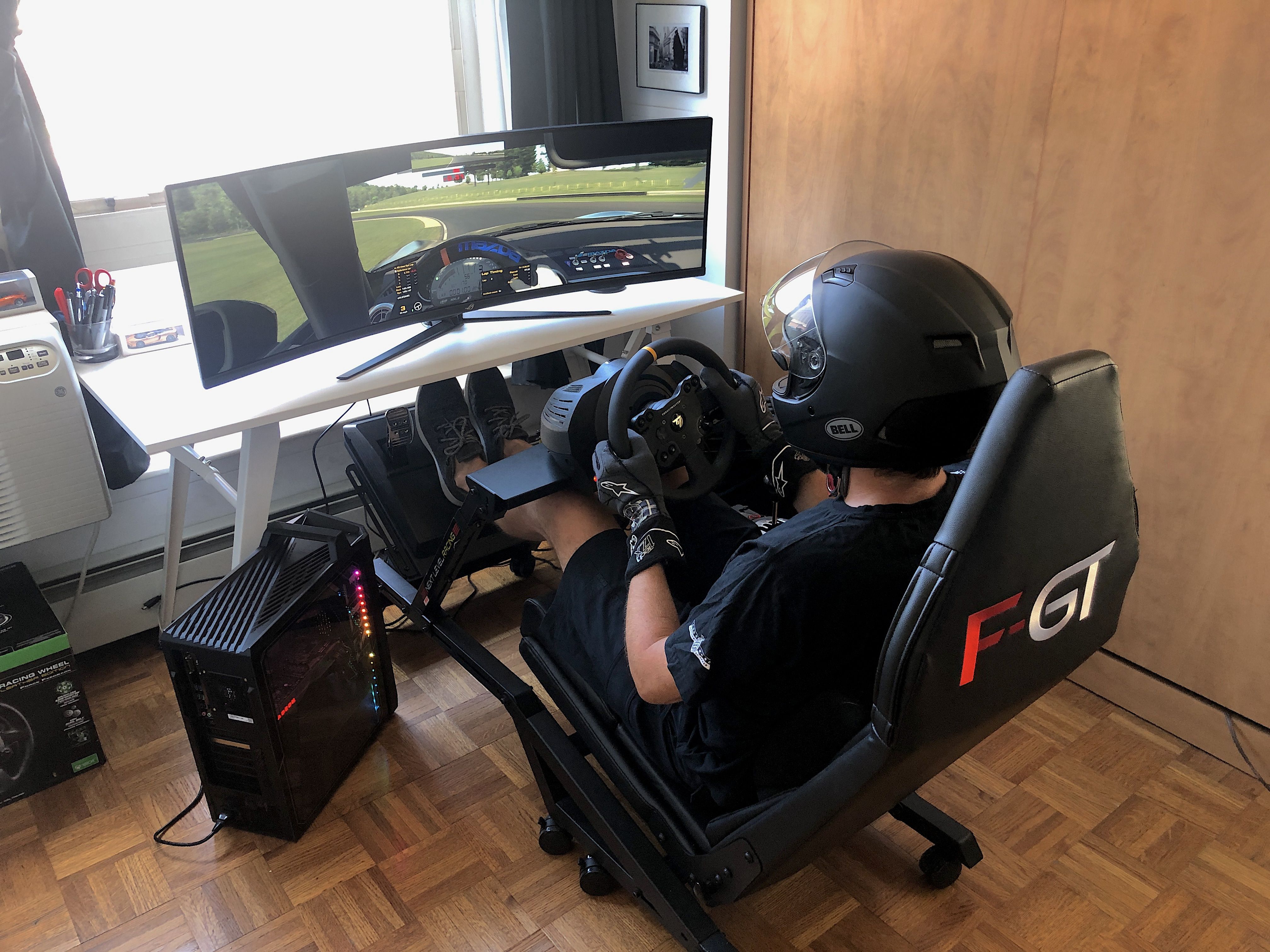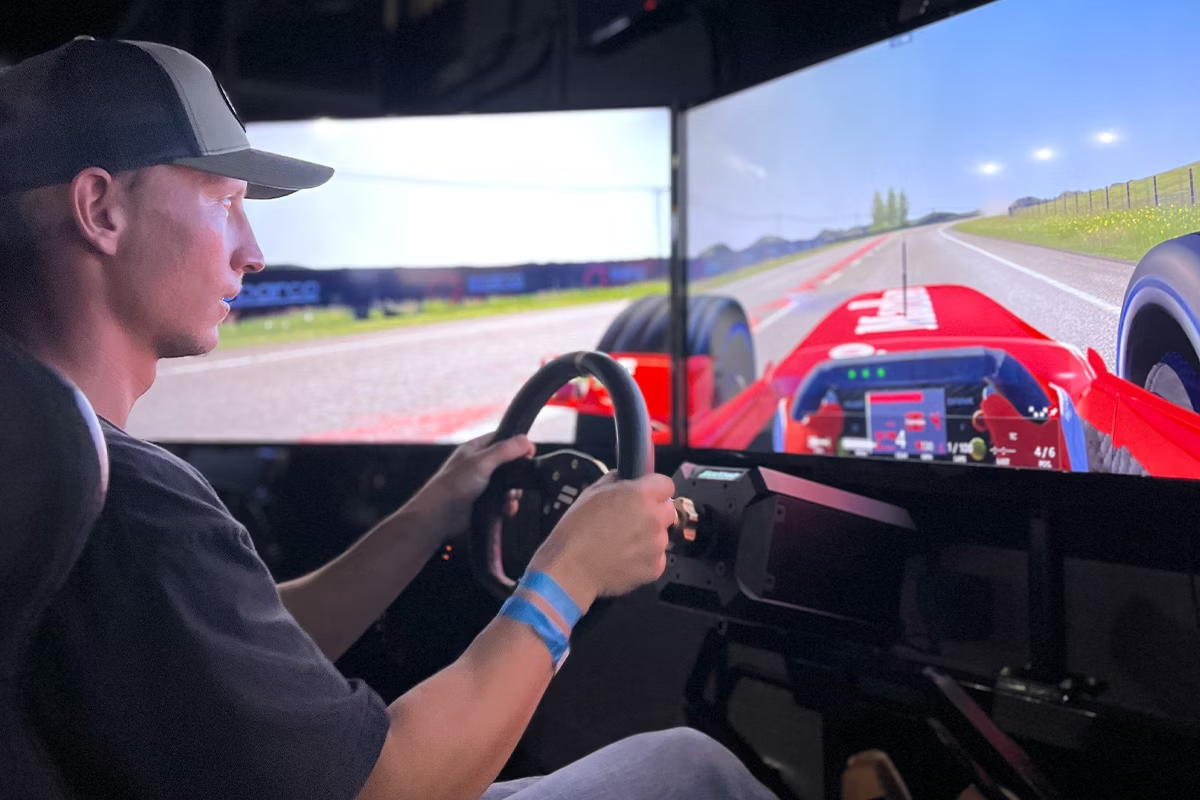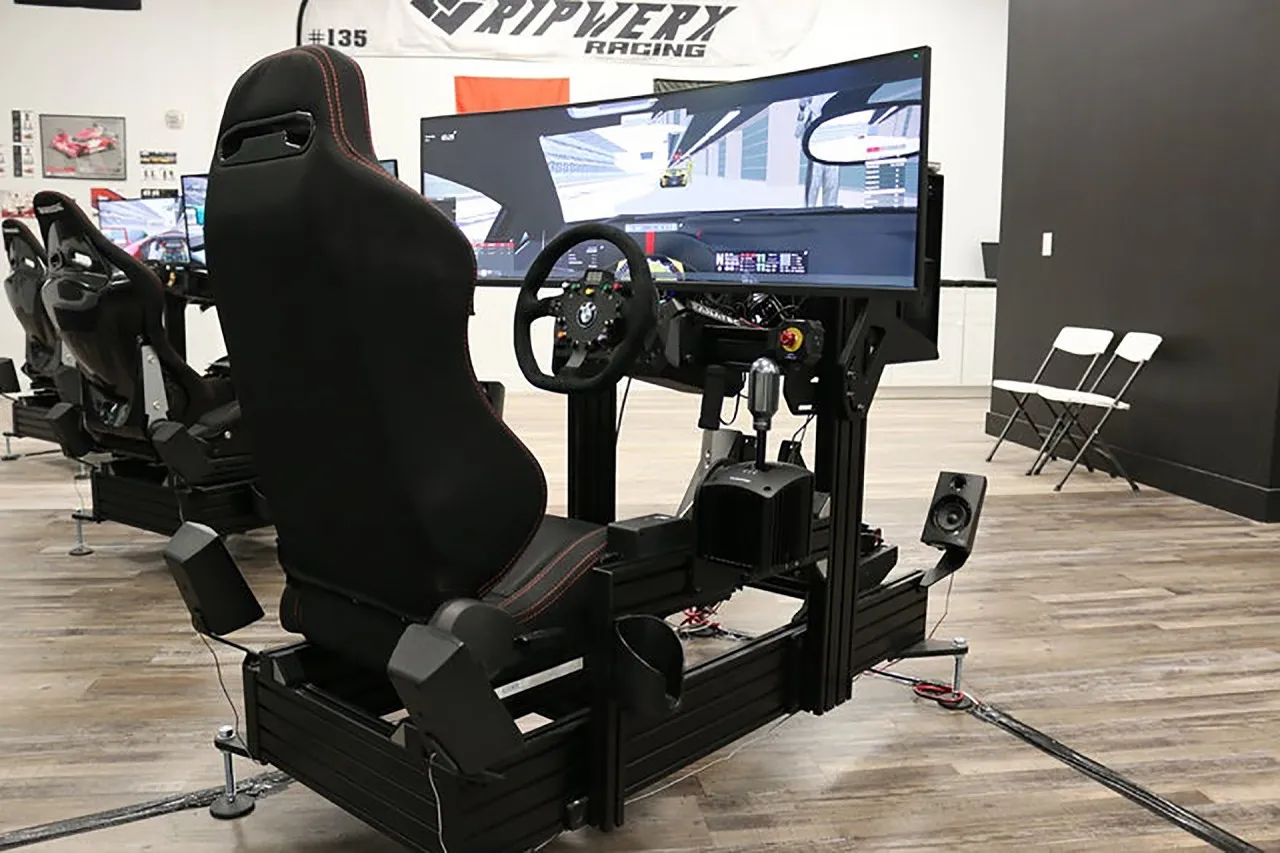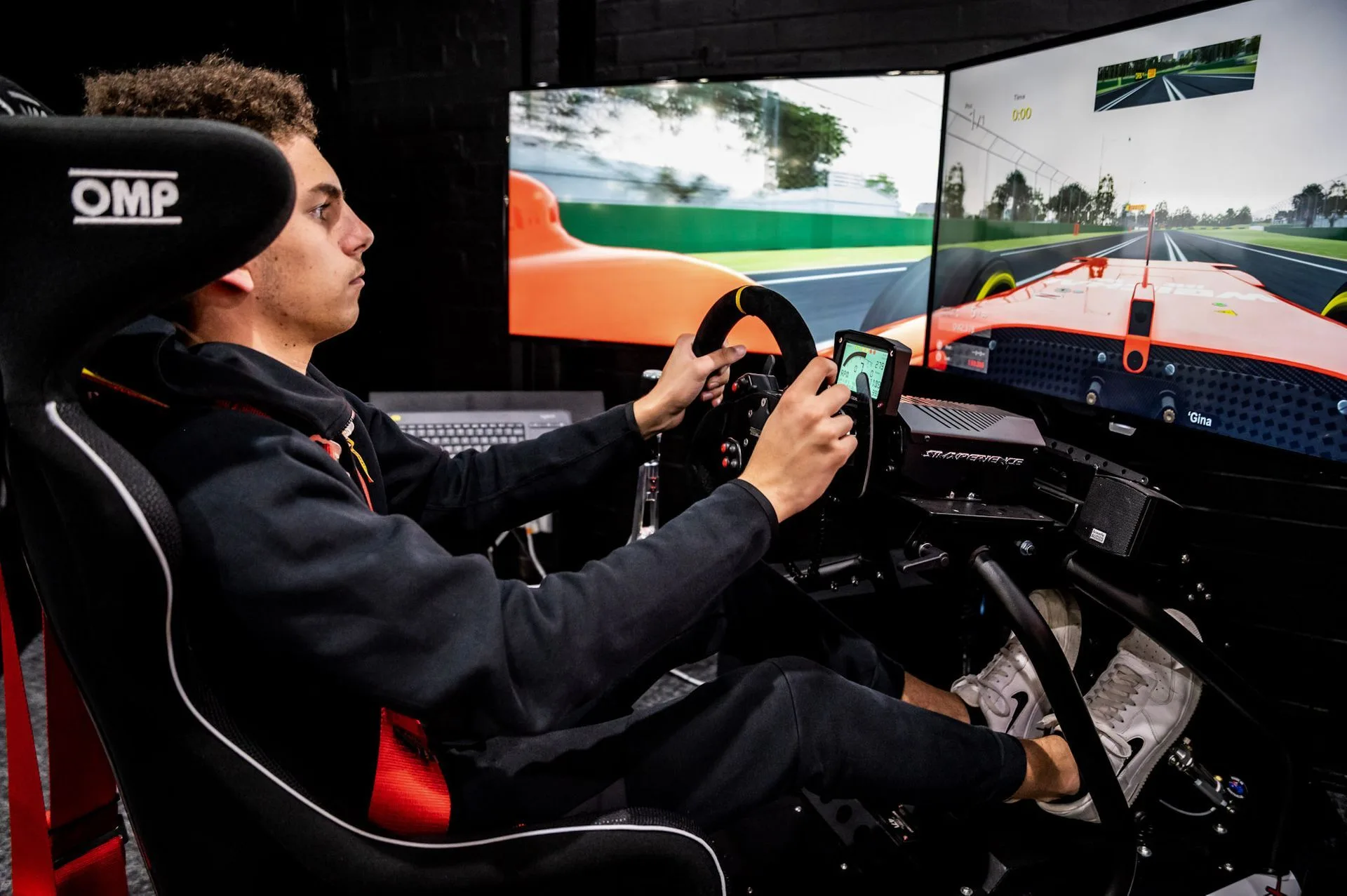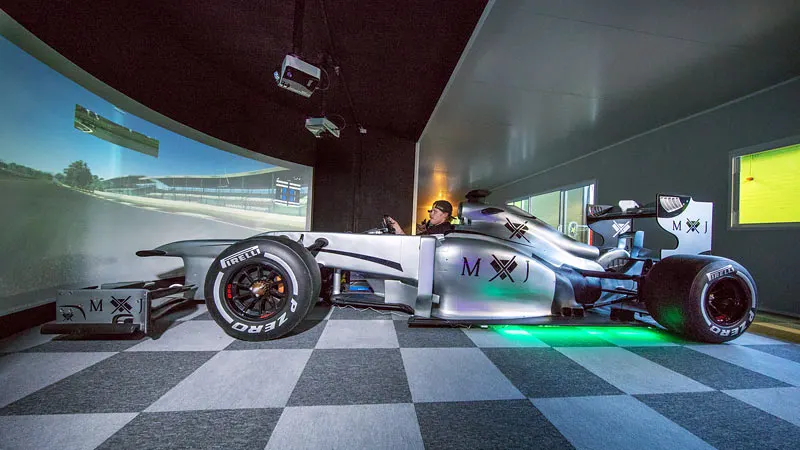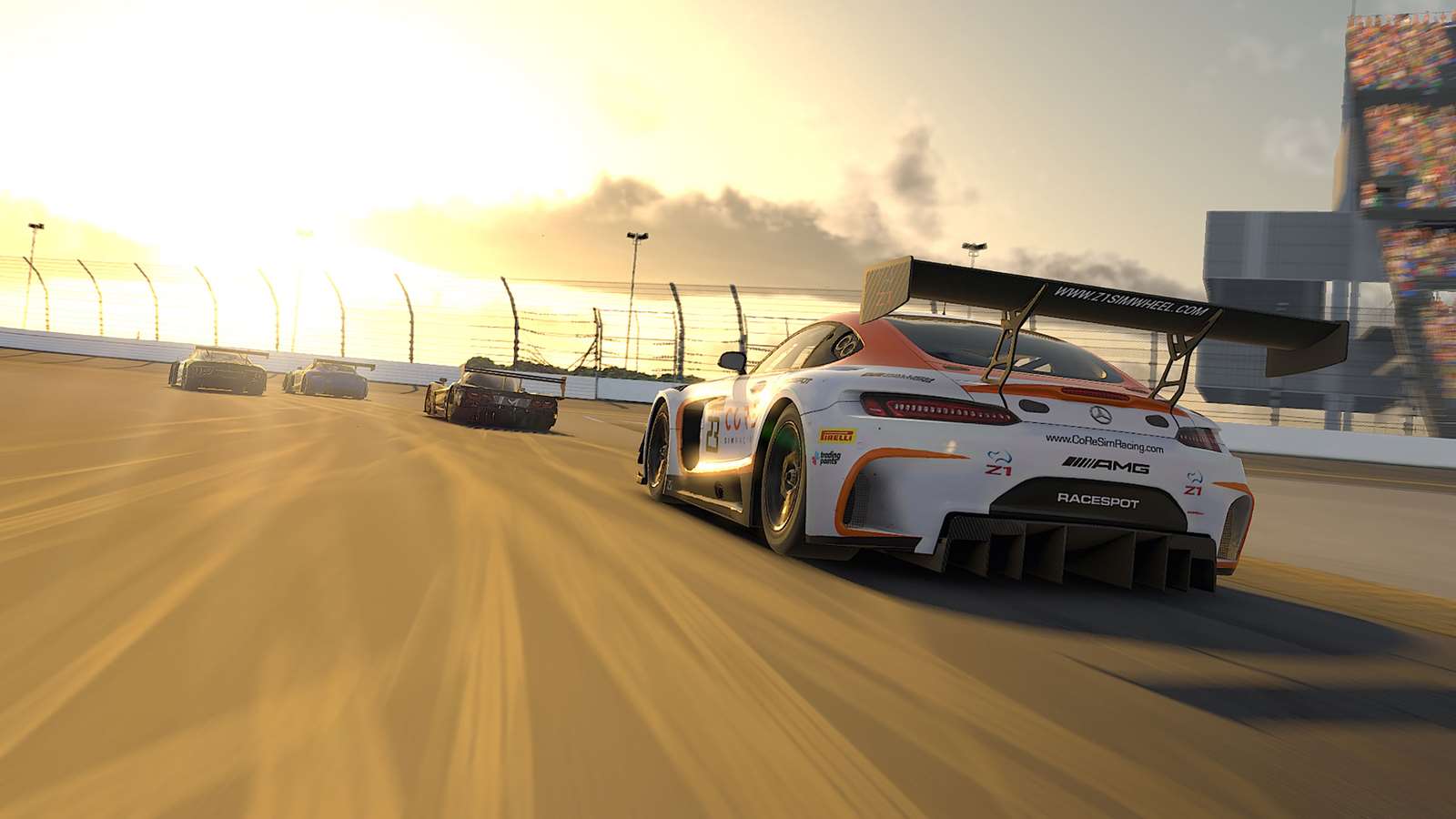Simulators In Racing And How They Help In Driver Training And Team Strategy
One of the remarkable innovations making waves in the racing industry is the use of simulators in racing. Simulators have become an integral part of racing, not only revolutionizing driver training but also influencing team strategies and overall race preparation.
Author:Daniel BarrettJan 06, 202453 Shares53.1K Views
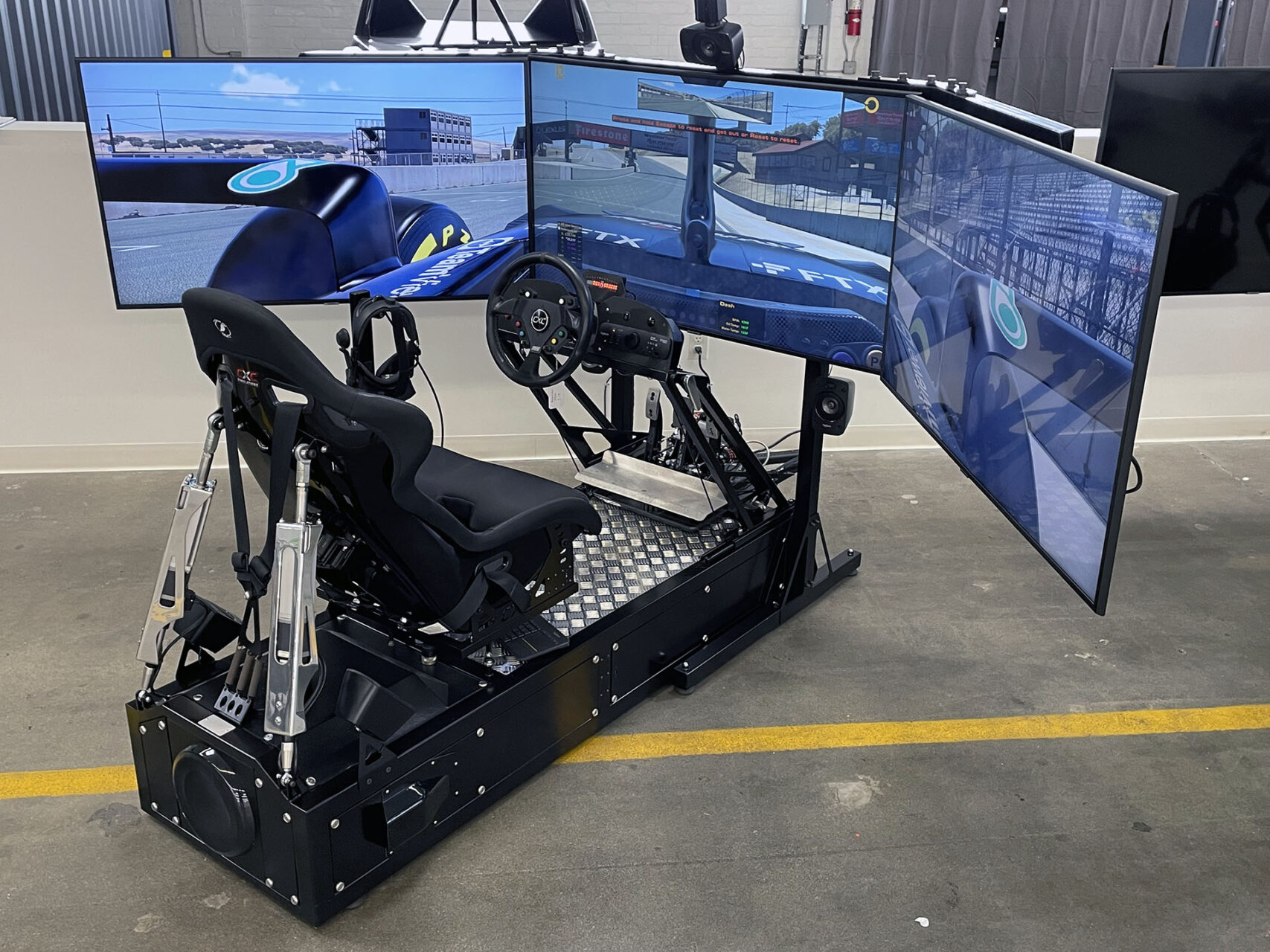
In the ever-evolving world of motorsports, technological advancements play a pivotal role in enhancing performance, safety, and the overall racing experience. One of the remarkable innovations making waves in the racing industry is the use of simulators in racing. Simulators have become an integral part of racing, not only revolutionizing driver training but also influencing team strategies and overall race preparation.
Evolution Of Racing Simulators
Early Days - Paving The Virtual Roads
The inception of racing simulators can be traced back to the early days of arcade games and rudimentary computer programs. During this nascent stage, these simulations aimed to provide basic driving experiences, capturing the imagination of gamers and racing enthusiasts. However, the limitations of technology during this era meant that these early simulators lacked the realism and sophistication that define the contemporary racing simulation landscape.
In the arcades, early racing games like "Pole Position" (1982) and "Out Run" (1986) laid the groundwork for what would later become a technological revolution in the racing simulation domain. These games, while entertaining, were characterized by simplistic graphics and basic physics engines that offered a glimpse into the world of racing but fell short in delivering an authentic experience.
Technological Leap - Redefining The Racing Experience
The rapid progression of technology served as a catalyst for the revolutionary transformation of racing simulators. As computingpower increased and graphics capabilities expanded, the virtual driving experienceunderwent a metamorphosis.
1. High-Fidelity Graphics:
Modern racing simulators boast cutting-edge graphics that recreate real-world tracks and environments with astonishing detail. High-resolution textures, realistic lighting effects, and meticulous attention to detail contribute to an immersive visual experience, transporting drivers to virtual replicas of renowned racing circuits.
2. Realistic Physics Engines:
The heart of any racing simulator lies in its physics engine. Early simulators struggled to replicate the complex physics of a racing car accurately. However, with advancements in computational power and algorithms, modern simulators now simulate vehicle dynamics, tire behavior, and aerodynamics with a level of precision that closely mirrors real-world conditions. This authenticity enhances the training value for professional drivers and teams.
3. Advanced Feedback Systems:
The evolution of force feedback systems has been a game-changer in racing simulators. These systems simulate the tactile sensations experienced by a driver, such as the forces during acceleration, braking, and cornering. High-end simulators utilize sophisticated force feedback mechanisms, including direct-drive steering wheels and hydraulic platforms, offering drivers a nuanced feel for the dynamics of their virtual cars.
4. Immersive Sound Design:
The auditory component of racing simulation has also seen remarkable improvements. Modern simulators feature realistic engine sounds, tire screeches, and ambient noises, enhancing the overall immersive experience. This attention to sound design contributes to the simulation's ability to replicate the sensory aspects of being inside a roaring race car.
Realistic Driving Experience - Bridging The Virtual And The Real
Replicating Real-World Driving Conditions
One of the most compelling advantages of integrating racing simulators into training regimens is their unparalleled ability to replicate real-world driving conditions. These simulators are equipped with cutting-edge technology that transcends traditional gamingexperiences, providing drivers with a remarkably realistic virtual environment. This fidelity is particularly evident in the recreation of renowned racing tracks, allowing drivers to hone their skills on digital replicasof the circuits they will encounter in actual competitions.
1. Accurate Physics Models:
Racing simulators leverage advanced physics models that intricately simulate the behavior of a vehicle in motion. From the nuances of tire grip and suspension dynamics to the impact of aerodynamics, these models ensure that the driving experience closely mirrors the complexities of real-world racing.
2. Visual Graphics Excellence:
The visual realism offered by modern simulators is nothing short of breathtaking. High-definition graphics, intricate detailing of track surfaces, and realistic environmental elements contribute to an immersive experience. Drivers can navigate virtual tracks that mirror their real counterparts, fostering a sense of familiarity and preparedness.
3. Sensations of Speed and Dynamics:
Simulators excel in recreating the visceral sensations associated with driving a high-performance vehicle. From the exhilaration of acceleration to the precision required in braking and cornering, the virtual experience closely emulates the physical demands of real racing. The immersive nature of these simulations allows drivers to acclimate to the intensity of racing scenarios in a controlled, virtual environment.
Improved Reaction Time - Navigating The Thin Line Of Victory
In the realm of motorsports, where victories are often determined by fractions of a second, cultivating and refining reaction time is paramount. Simulators serve as invaluable tools for honing this critical skill, offering drivers a platform to practice and enhance their responses across various driving scenarios.
1. Gear Shifting Precision:
Simulators enable drivers to fine-tune their gear-shifting capabilities, ensuring seamless transitions between gears. The ability to execute precise gear changes swiftly is essential for maintaining optimal speed and performance on the track.
2. Braking and Acceleration Proficiency:
Practice makes perfect, especially when it comes to mastering the delicate balance of braking and acceleration. Simulators allow drivers to repeatedly practice the nuances of these actions, facilitating muscle memory development and enhancing overall proficiency.
3. Overtaking Strategies:
Strategic overtaking in racing demands rapid decision-making and impeccable execution. Simulators offer a controlled setting for drivers to refine their overtaking maneuvers, enhancing their capacity to evaluate opportunities and carry out overtaking strategies with confidence. For more insights into the dynamic world of racing and technology, visit GadgetsGaadi.
Learning A New Track - Beyond Memorization
Comprehensive Track Study
Mastering a new racing circuit extends far beyond the mere memorization of twists and turns. It involves a meticulous process of studying and cataloging various features and characteristics unique to each track.
Racing drivers, whether seasoned professionals or aspiring newcomers, recognize that acquiring a comprehensive understanding of a circuit is fundamental to achieving optimal performance.
1. Understanding Track Features:
Successful navigation of a track demands a thorough comprehension of its distinct features. This includes identifying key landmarks, understanding elevation changes, and recognizing challenging corners. Drivers utilize their knowledge of these features to anticipate and respond effectively during races.
2. Cataloging Surface Types:
A crucial aspect of learning a new track involves cataloging the types of surfaces that drivers will encounter. The texture and composition of road surfaces can vary significantly, from smooth asphalt to rugged concrete. This variation plays a pivotal role in influencing tire performance and, consequently, the overall handling of the vehicle.
Impact Of Surface Dynamics On Grip
Understanding the intricacies of track surface dynamics is paramount for drivers seeking a competitive edge. Different surfaces exhibit unique characteristics, and the best race simulators go beyond visual replication, delving into the nuances of how these surfaces impact grip.
1. Simulating Track Surface Dynamics:
Leading-edge racing simulators excel in replicating the dynamic behavior of various track surfaces. They simulate the interaction between tires and the road, accounting for factors such as texture, grip levels, and surface irregularities. This level of realism enables drivers to experience the subtle differences that can significantly influence vehicle performance.
2. Strategic Planning and Adaptability:
Armed with insights into track surface dynamics, drivers can formulate more strategic race plans. For example, anticipating how the vehicle will respond to different surfaces allows drivers to fine-tune their tire-related decisions. This adaptability becomes a valuable asset during races, where changing track conditions demands quick and informed adjustments to stay competitive.
3. Enhancing Racing Strategies:
The ability to comprehend and replicate track surface dynamics empowers drivers to refine their racing strategies. Whether it's adjusting tire pressures, choosing optimal tire compounds, or refining braking points, the knowledge gained through simulator sessions contributes to a more nuanced and effective approach to racing.
Mental Endurance Training In Motorsports - Beyond The Physical Limits
Extended Races, Demanding Minds - The Challenge Of Mental Endurance
In the realm of motorsports, the battle extends beyond the twists and turns of the track; it delves into the endurance of both body and mind. With races lasting anywhere from 1 to 2 hours, drivers find themselves confined within the cockpit, navigating high-speed challenges that not only strain their physical capabilities but also put their mental faculties to the test.
1. The Stress and Pressure of Motorsport:
Motorsport, by its nature, is a crucible of stress and pressure. Drivers not only contend with the unforgiving nature of the track but also face fierce competition from fellow racers. The mental fortitude required to make split-second decisions, strategize against opponents, and maintain focus throughout the entirety of a race is immense.
2. Combatting Physical and Mental Fatigue:
Extended periods inside a racing car can induce physical fatigue, affecting a driver's reflexes and overall performance. However, the toll is not limited to the body; mental fatigue can be equally taxing. Managing the constant barrage of information, staying alert, and making precise decisions demand mental resilience. To address these challenges effectively, drivers need a holistic approach that includes both physical and cognitive development.
Physical Development Programs - Building Stamina And Resilience
1. Training the Body to Withstand Tiredness:
Physical development programs are integral to a driver's preparation for the grueling demands of motorsports. Stamina-building exercises, cardiovascular training, and strength conditioning contribute to the body's ability to endure prolonged periods of exertion. These programs not only enhance physical endurance but also fortify the muscles and reflexes crucial for precise control of the racing car.
2. Navigating Stressful Conditions:
Motorsports often expose drivers to extreme conditions, from high temperatures to G-forces experienced during rapid acceleration and braking. Physical development programs include simulations of these conditions, enabling drivers to acclimate and build resilience to the stresses they will encounter during races.
Esports Revolution - Unleashing The Power Of Simulated Racing
Transformative Impact On Formula 1 And Esports Racing
The influence of simulators extends far beyond the Formula 1 track, catalyzing a revolution in the realm of Esports racing. The marriage of advanced technology and the virtual racing world has given birth to a new era, where professional teams, enthusiasts, and aspiring drivers converge to redefine the landscape of competitive racing.
1. Professional Teams Embrace Esports:
The Esports revolution in racing has seen the emergence of professional teams dedicated exclusively to virtual competitions. Formula 1 teams, renowned for their on-track prowess, have extended their reach into the digital realm, forming Esports divisions to compete in virtual championships. This paradigm shift underscores the legitimacy and significance of simulated racing as a competitive platform.
2. Accessibility and Engagement:
High-fidelity simulation platforms have democratized racing, making it accessible to a broader audience. Aspiring drivers, enthusiasts, and seasoned professionals alike can participate in virtual races, fostering a global community of racers. The interactive nature of Esports racing enhances engagement, providing a dynamic platform for fans to connect with their favorite teams and drivers.
Simulated Racing - A Training Ground For Excellence
1. Controlled and Cost-Effective Training:
Simulated racing serves as a controlled and cost-effective training ground for drivers and engineers. In the virtual realm, teams can conduct extensive test sessions without the logistical challenges and expenses associated with on-track testing. This enables them to refine techniques, strategies, and vehicle setups in a controlled environment, optimizing performance without the constraints of physical tracks.
2. Amateur Engineers Benefit:
Beyond professional drivers, simulators empower amateur engineers and aspiring racers. The intricacy and physics fidelity of modern simulation platforms allows them to delve into the fundamentals of tuning and maneuvering a racing car. Through detailed telemetry data analysis and consistent practice, these enthusiasts can enhance their skills, gaining a profound understanding of vehicle dynamics. This knowledge translates into improved performance when transitioning to real-world tracks.
3. Skill Development and Performance Enhancement:
The immersive nature of simulated racing facilitates skill development for drivers of all levels. From perfecting racing lines to mastering braking points, the virtual environment provides a platform for continuous improvement. Aspiring racers can hone their capabilities, ensuring a seamless transition from the simulated world to the competitive reality of on-track racing.
Sim Racing Vs. Real Racing - Unveiling Distinct Realities
Surface Similarities, Underlying Contrasts
While sim racing and real racing share a common goal of high-speed competition, their divergence lies in the fundamental distinctions that shape the nature of these experiences. The apparent similarities on the surface mask the nuanced differences that define the essence of each racing realm.
1. Physical Presence and Sensory Realism:
In real racing, drivers inhabit the physical space of a racing car, feeling the engine's vibrations, the grip of the steering wheel, and the physical forces exerted during acceleration, braking, and cornering. The visceral experience of real racing is inseparable from the physical sensations that guide split-second decisions. Sim racing, though immersive, lacks the one-to-one replication of these physical sensations. While advanced simulators offer force feedback through steering wheels and pedals, the absence of true G-forces and road bumps creates a perceptible gap between the virtual and the tangible.
2. Dynamic Real-World Challenges:
Real racing introduces an array of unpredictable challenges that demand on-the-fly adaptation. Drivers contend with ever-changing track conditions, the unpredictability of weather, and the dynamic interactions with other competitors on the track. Sim racing, despite its realism, operates in a controlled virtual environment where external factors are programmed rather than organically occurring. This distinction underscores the strategic adaptability required in real racing, where external variables are in constant flux.
Sim Racing - Virtual Realism With Limitations
Sim racing unfolds in a virtual landscape governed by computer software and specialized hardware. Steering wheels, pedals, and high-resolution displays contribute to the immersive experience, offering a level of realism that can rival the tangible world. However, the absence of true physical presence introduces a layer of separation, a boundary where the digital and the physical diverge.
2. Sensation Limitations:
Despite the technological prowess of simulators, certain sensations intrinsic to real racing remain elusive. Sim racers do not experience the gravitational forces exerted during rapid accelerations or decelerations. The absence of bumps and jolts on the virtual road creates a disconnect from the tactile realities faced by drivers navigating real-world tracks.
Simulators In Racing - People Also Ask
What Is The Best Racing Simulator?
- iRacing:Known for its realistic physics and extensive online multiplayer racing.
- Assetto Corsa:Offers a wide range of cars and tracks with realistic driving dynamics.
- Project CARS 2:Features a diverse selection of cars and tracks, emphasizing realistic weather and day-night cycles.
- rFactor 2:Known for its advanced tire model and dynamic track conditions.
- F1 2021:Specifically focused on Formula 1 racing, providing an authentic F1 experience.
What Is A Racing Simulation?
A racing simulation, or racing simulator, is a computer-based system designed to replicate the experience of driving a racing car in a virtual environment. It involves the use of specialized software, hardware, and peripherals to create a realistic driving experience. Racing simulations aim to simulate various aspects of real-world racing, including vehicle physics, track dynamics, and environmental conditions.
Simulations often use force feedback steering wheels, pedals, and high-quality graphics to immerse users in a lifelike driving experience. They serve multiple purposes, ranging from entertainment and gaming to professional training for race car drivers.
Do Race Car Drivers Use Simulators?
- Learn New Tracks:Simulators allow drivers to familiarize themselves with new tracks before racing on them in real life.
- Refine Techniques:Drivers can use simulators to practice various driving techniques, such as overtaking, braking points, and racing lines.
- Improve Reaction Times:Simulators help drivers enhance their reaction times and responses to dynamic racing situations.
- Test Car Setups:Drivers can experiment with different car setups to find the optimal configuration for specific tracks and conditions.
- Mental Preparation:Simulators contribute to mental endurance training, helping drivers develop the focus and concentration required for competitive racing.
Conclusion
Racing simulators have emerged as a game-changer in the world of motorsports, transforming how drivers train and teams prepare for races. The marriage of cutting-edge technology and realistic simulation has not only elevated skill development but has also become an indispensable tool for refining team strategies. As simulators continue to evolve, the racing industry can expect a future where virtual and real-world racing experiences seamlessly converge, pushing the boundaries of what is possible on and off the track.
Jump to
Evolution Of Racing Simulators
Realistic Driving Experience - Bridging The Virtual And The Real
Learning A New Track - Beyond Memorization
Mental Endurance Training In Motorsports - Beyond The Physical Limits
Esports Revolution - Unleashing The Power Of Simulated Racing
Sim Racing Vs. Real Racing - Unveiling Distinct Realities
Simulators In Racing - People Also Ask
Conclusion

Daniel Barrett
Author
Daniel Barrett is a tech writer focusing on IoT, gadgets, software, and cryptocurrencies. With a keen interest in emerging technologies, Daniel offers expert analysis and commentary on industry trends. Follow him for authoritative insights into the latest tech innovations.
Latest Articles
Popular Articles
